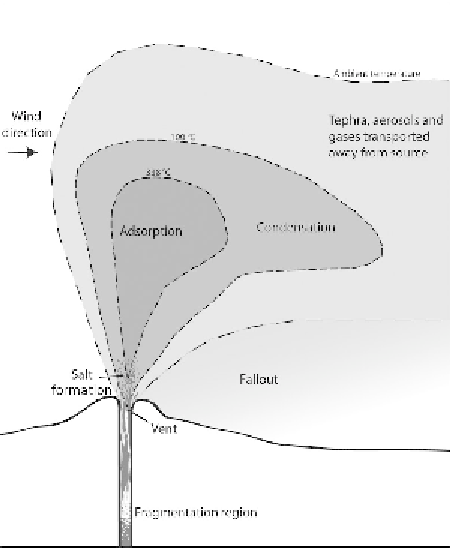Environmental Engineering Reference
In-Depth Information
Figure 17.2 A schematic section of an eruption plume showing ash-leachate
formation (modi
ed from Oskarsson,
1980
).
the environmental impacts are poorly understood due to a combination of the
diversity of depositional environments and the complexity of multiple contem-
poraneous forcings. This chapter summarises the major environmental effects of
volcanic ash deposition and how these can affect the climate over various timescales.
17.2 Terrestrial ash blankets
17.2.1 Environmental impact
Volcanic ash deposition can mechanically bury, overload or abrade vegetation,
and/or induce chemical changes from nutrient and acid release (
Figure 17.3A
;
Mack,
1981
; Ayris and Delmelle,
2012
). Ash blankets can be several metres thick
proximal to the source, so the extent of destruction is dictated both by the size of
the eruption and the proximity to the volcano. Moreover,
flora varies considerably
in their ability to survive ash deposition. Mosses and lichens can be inhibited
by just 10 mm of ash (Antos and Zobel,
1985
), while some shrubs and pine trees
can survive tephra deposits
>
750 mm (Eggler,
1948
). The blanketing of soil

